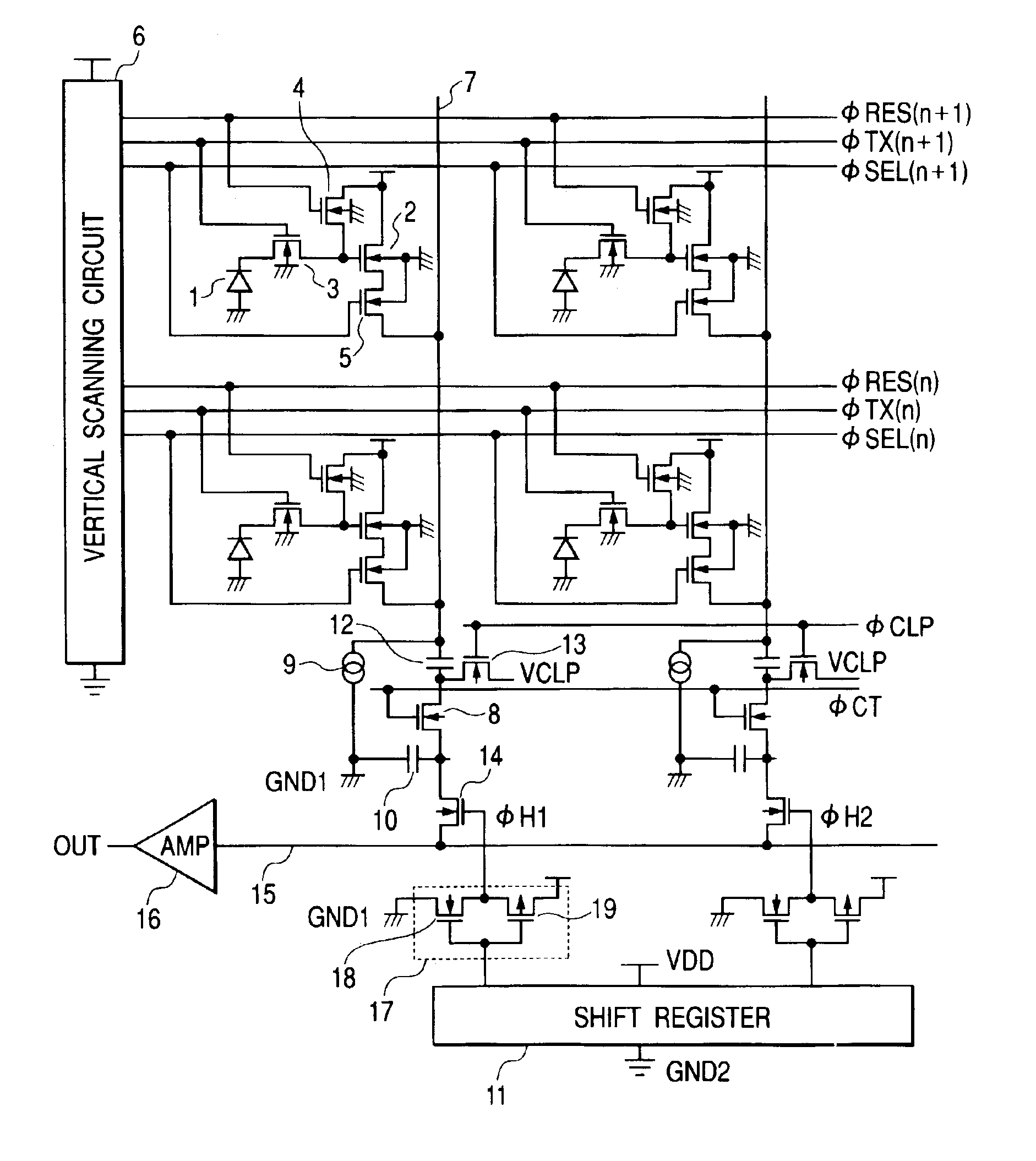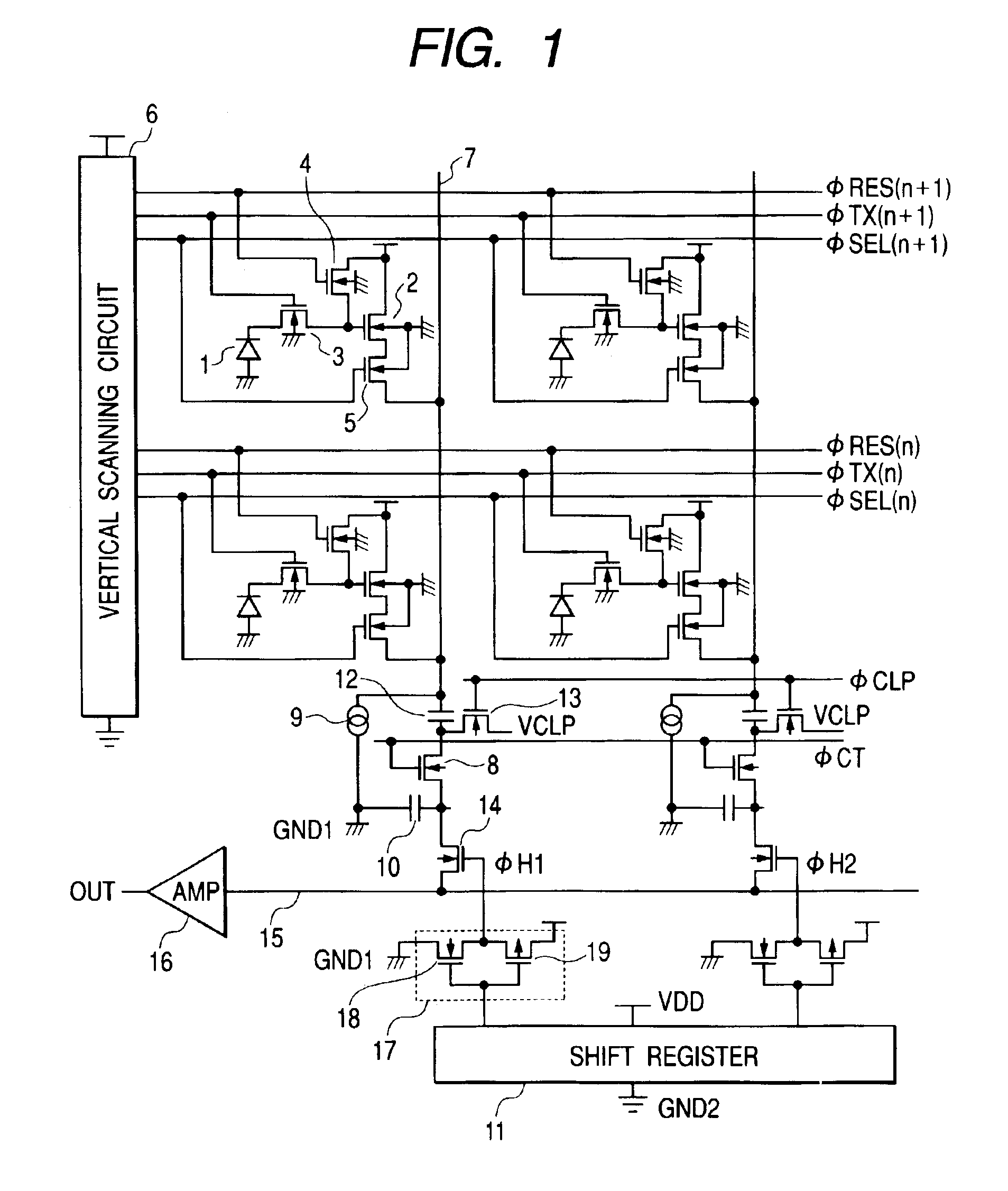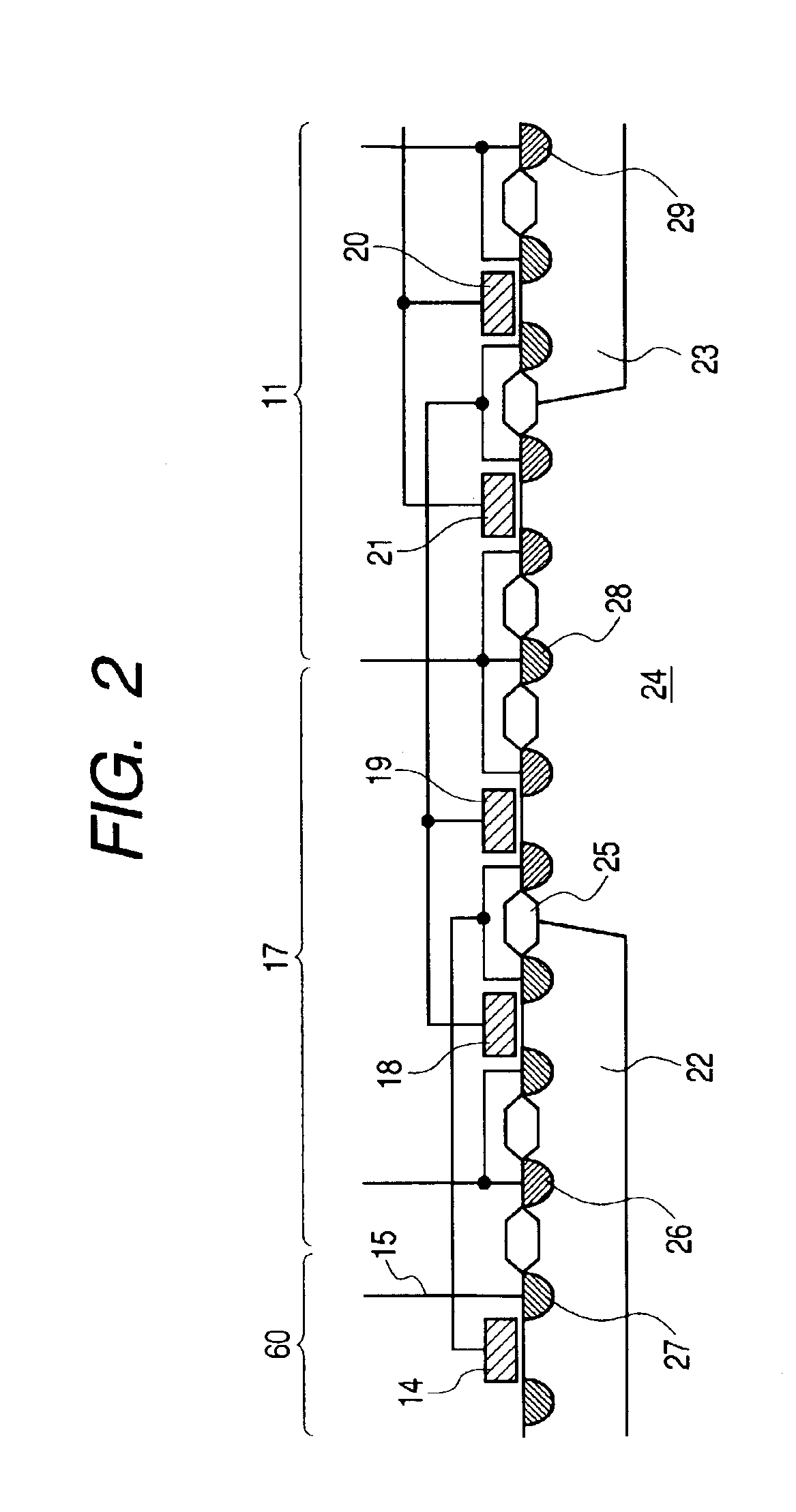Photoelectric conversion device
- Summary
- Abstract
- Description
- Claims
- Application Information
AI Technical Summary
Benefits of technology
Problems solved by technology
Method used
Image
Examples
first embodiment
[0021
[0022]The first embodiment of the present invention will be described in detail. FIG. 1 is a conceptual diagram showing an equivalent circuit of a photoelectric conversion device of the first embodiment. This photoelectric conversion device is formed on a single semiconductor substrate by, for example a CMOS process.
[0023]In the drawing, pixels are arranged in 2×2 array in horizontal and vertical directions, but the pixels are not particularly limited to this array. In FIG. 1, a unit pixel includes a photodiode 1 which is a photoelectric conversion element, an amplification metal oxide semiconductor field effect transistor (MOSFET) 2 for amplifying a signal generated by the photodiode 1, a reset switch 4 for resetting an input of the amplification MOSFET 2 to predetermined voltage, and a select switch 5 for controlling electrical connection between a source electrode of the amplification MOSFET 2 and a vertical output line 7. Additionally, a transfer switch 3 is installed to co...
second embodiment
[0040
[0041]The second embodiment of the present invention will be described in detail. FIG. 4 is a conceptual diagram showing an equivalent circuit of a photoelectric conversion device of the second embodiment. The photoelectric conversion device shown in FIG. 4 is formed on a single semiconductor substrate by, for example a CMOS process. Description of circuit components having roles similar to those of FIG. 1 will be omitted.
[0042]A difference from FIG. 1 is that φTX, φRES, φSEL supplied to a transfer switch 3, a reset switch 4 and a select switch 5 of a pixel are generated by a buffer circuit 40 to which a scanning signal of a vertical scanning circuit 6 as a logic circuit is inputted. In this case, the vertical scanning circuit 6 includes a shift register and uses a separate buffer circuit 40.
[0043]In the drawing, two kinds of supply paths of a power source VDD are shown. As described later, these are power supply voltage supply paths which do not interfere with each other. Addi...
third embodiment
[0050
[0051]The third embodiment of the present invention will be described in detail.
[0052]An equivalent circuit of a photoelectric conversion device of the embodiment is similar to the second embodiment of FIG. 4. However, the separation of the first and second N type wells and the separation of the first and second P type wells of the second embodiment are realized not based on PN junctions but based on insulating layer formation using a silicon on insulator (SOI) substrate and trench processing. FIG. 6 is a conceptual diagram showing a partial sectional structure of a select switch 60, a buffer circuit 40 and a vertical scanning circuit 6 of the embodiment. There is a semiconductor layer 57 on an insulating layer 56, and the select switch 60, the buffer circuit 40 and the vertical scanning circuit 6 are formed on the semiconductor layer 57.
[0053]The components are separated from one another in a horizontal direction by an insulating layer 58 of trench processing. By a method simi...
PUM
 Login to View More
Login to View More Abstract
Description
Claims
Application Information
 Login to View More
Login to View More - R&D
- Intellectual Property
- Life Sciences
- Materials
- Tech Scout
- Unparalleled Data Quality
- Higher Quality Content
- 60% Fewer Hallucinations
Browse by: Latest US Patents, China's latest patents, Technical Efficacy Thesaurus, Application Domain, Technology Topic, Popular Technical Reports.
© 2025 PatSnap. All rights reserved.Legal|Privacy policy|Modern Slavery Act Transparency Statement|Sitemap|About US| Contact US: help@patsnap.com



